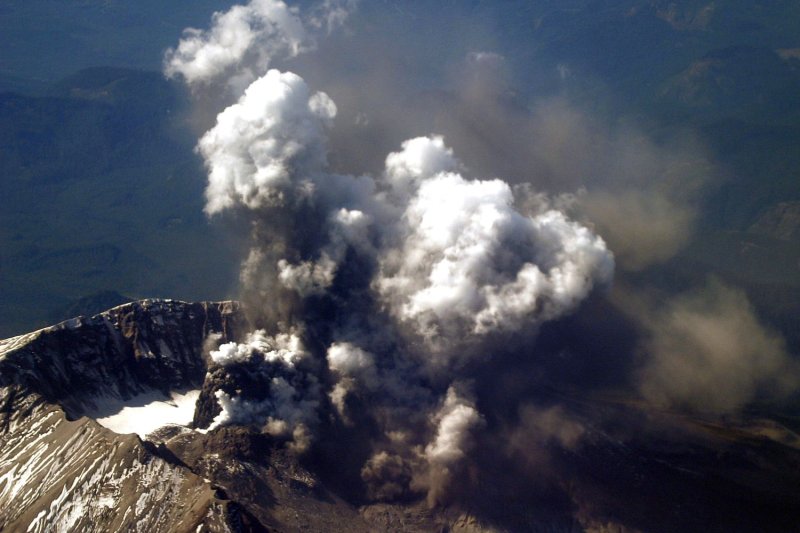Mount St. Helens emits a plume of steam and ash from an area of new crevasses in the crater glacier south of the 1980-86 lava dome on October 1, 2004. The event lasted approximately 25 minutes and created a pale-gray cloud that reached an altitude of almost 10000 ft. The image was taken at an altitude of 27,000 ft aboard a U.S. Navy P-3C Orion aircraft. (UPI Photo/Scott Taylor/U.S. Navy) |
License Photo
SKAMANIA COUNTY, Wash., May 2 (UPI) -- The magma deep inside Mount St. Helens is rising, but there's no risk of an eruption anytime soon -- that according to seismologists presenting at today's annual Seismological Society of America meeting.
Fresh magma began pooling deep (2.5 miles) below the volcano's surface in 2008, the result of a fresh batch of molten rock forming in the volcano's chambers pushing everything around it up and away.
This doesn't mean it's getting ready to erupt," Seth Moran, a seismologist at Washington state's Cascades Volcano Observatory, told LiveScience. "The balloon has inflated, and it could stay inflated for decades. What we can say, is when it is ready to erupt, we will know."
Over the last several years, Moran and his colleagues have been monitoring a series of small earthquakes and ground swelling associated with the re-pressurization of the volcano's magma reservoir.
Mount St. Helens erupted violently in 1980, killing 57 people and causing over $1 billion in property damage. Over the last couple of decades, the volcano has featured a series of much smaller, gentler eruptions.
"This is probably what Mount St. Helens does," Moran told CBS, explaining that other volcanos demonstrate similar repressurization behaviors after an eruption.
"It may stay perched at ready stage for a long time before it starts to erupt. The reassuring thing is: when it's really ready to erupt, it gives lots and lots of signs."















